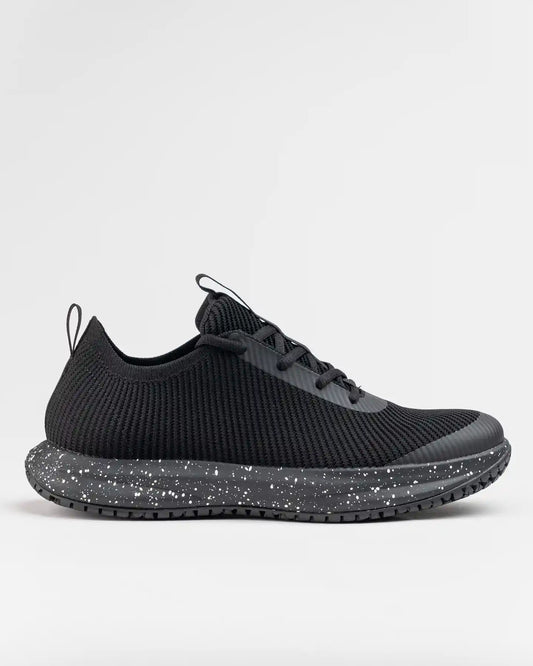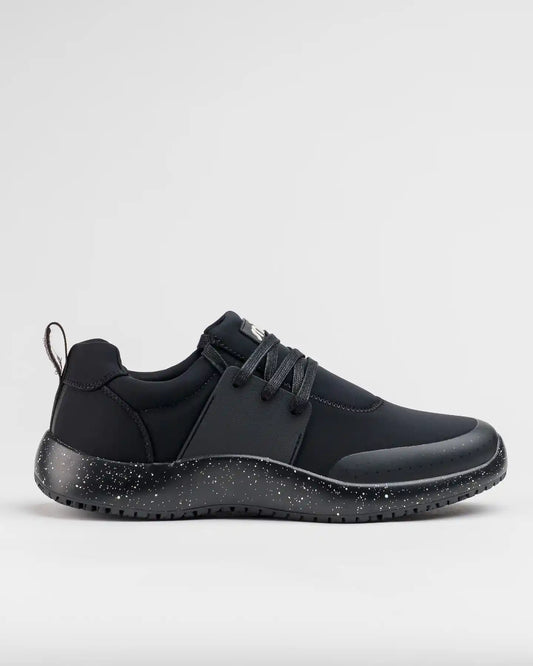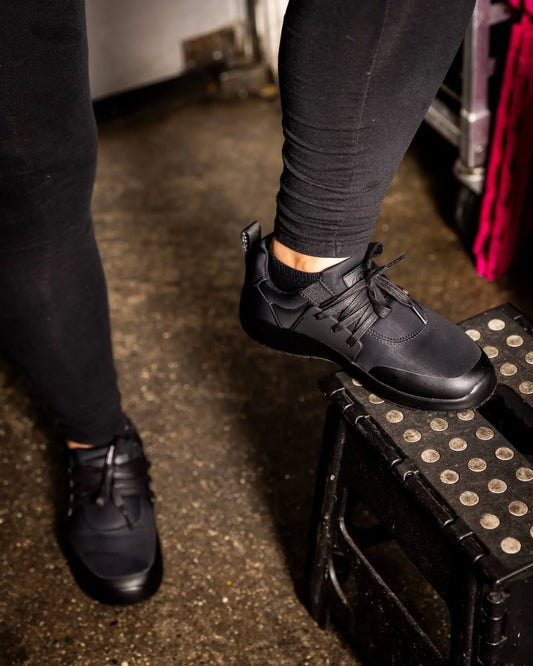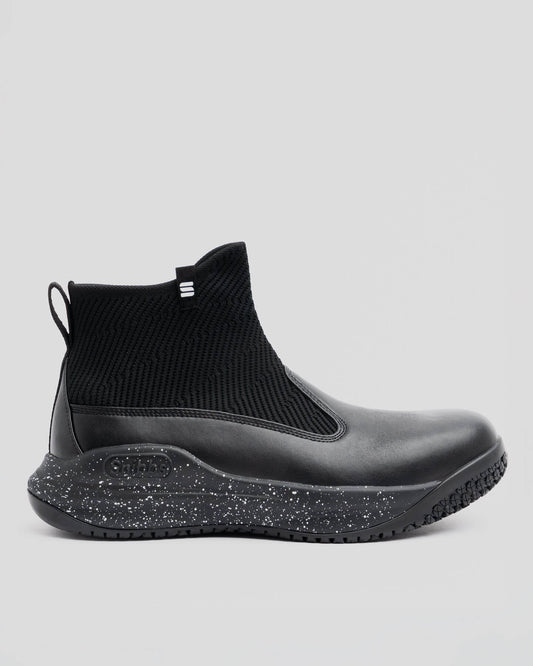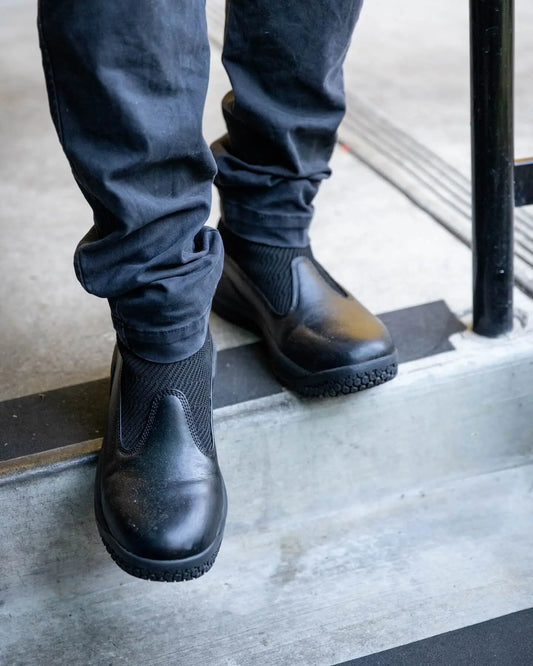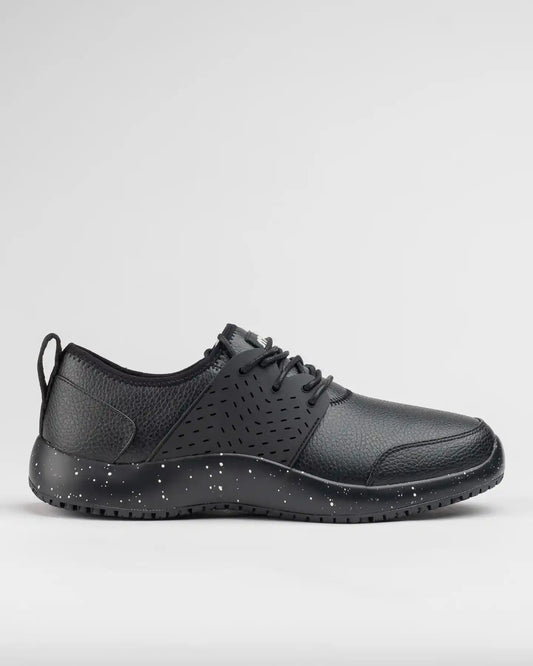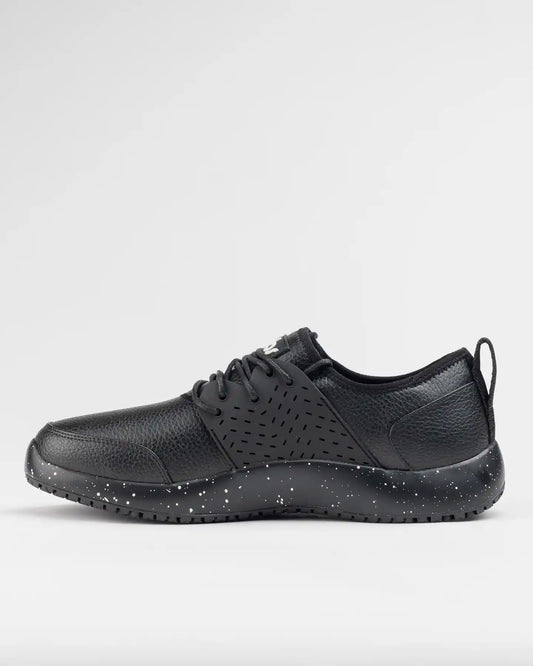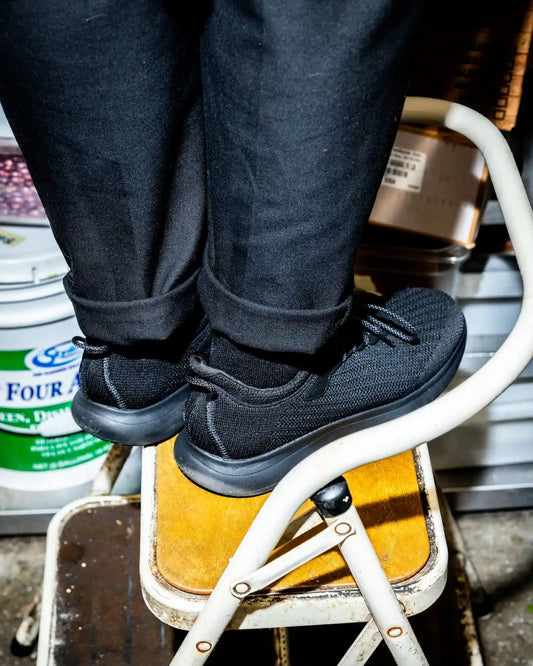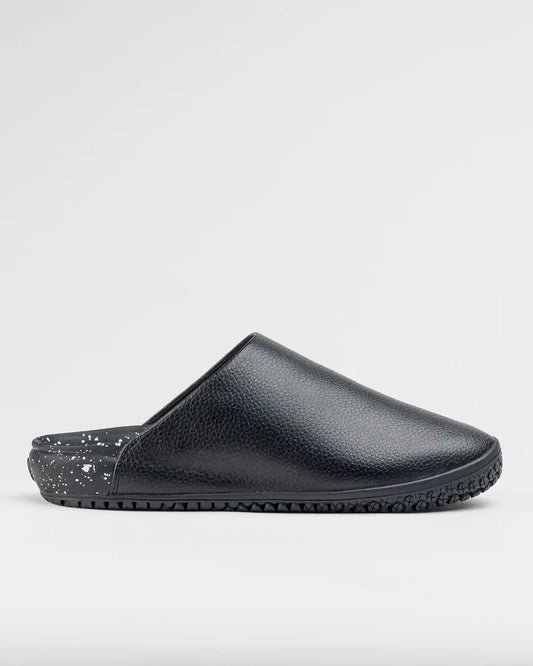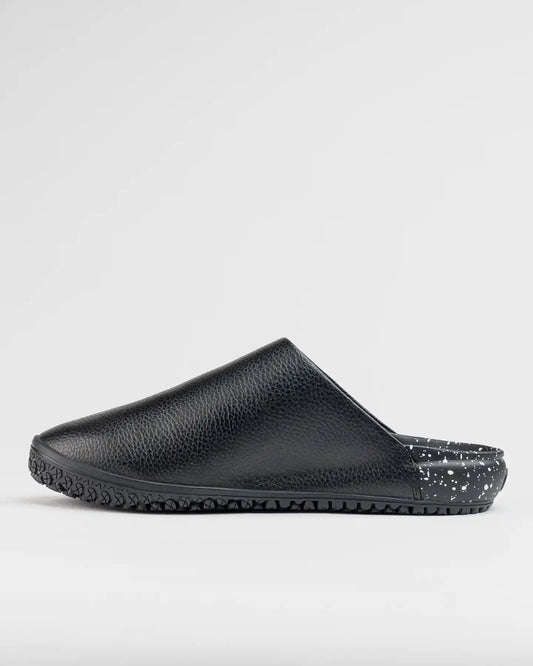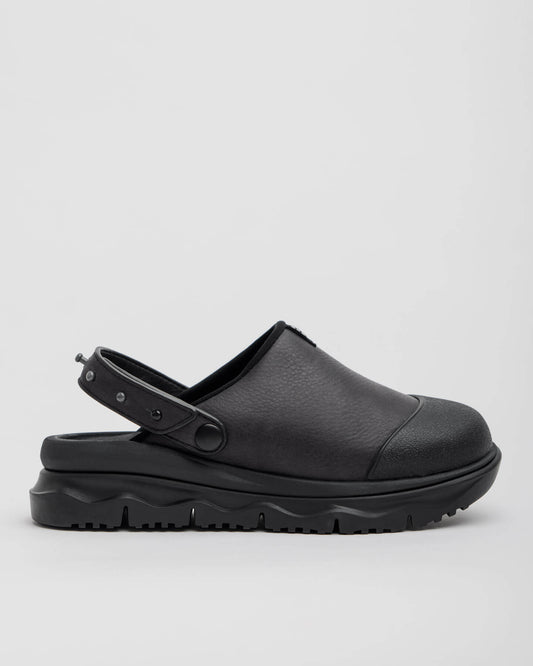9 Ways to Prevent Nurse Back Pain
Alex Kinejara
Hospital nurses are the MVPs of the health care industry. From the long hours you put in each day to the endless patient care and support you provide, your compassion and dedication do not go unseen.
Unfortunately, your back pain does.
The truth is, 70% of nurses have at least one work-related experience with back pain each year.1 So, how can you avoid becoming a part of this statistic?
Knowing what you can do ahead of time can help prevent back pain before it starts. Let’s take a closer look at nine ways to prevent nurse back pain and the common causes of such soreness within the nursing profession.
#1 Lift and Bend Correctly
If you’re not sure how to protect your back as a nurse, start by taking a look at how you lift and bend while you’re on the job. One of the nursing personnel duties might be to help reposition patients or transfer them from their bed to another location, which can become a very heavy task, especially if you’re doing it frequently.
Lifting and bending is a leading cause of injury in healthcare professionals. So, whether you’re helping to move a patient or are maneuvering heavy equipment or boxes, be sure to use proper safety precautions to avoid back pain and potential injury, including:2
- Bending at your knees
- Making sure your chest stays upright
- Keeping your back straight
- Keeping the weight you’re carrying close to your body so that it’s easier to carry
#2 Apply Hot and Cold Therapy
If you find that you’re feeling tender or sore in your back, you can try various forms of hot and cold therapy to ease your discomfort and prevent further pain. Typically, cold therapy is beneficial for helping to decrease pain and inflammation. Contrarily, heat therapy is often used when your muscles are feeling stiff.3
Consider the following suggestions to get rid of any discomfort in your back (and loosen tight muscles to prevent further low back pain):
- Heat patches or heating pad – If you wake up feeling stiff in your low back, you can place a heat patch on the affected area to help loosen up your muscles.
- Cold patches or ice pack – Feeling like you might have lifted one too many patients during your last shift? Use a cold patch or ice pack to help prevent inflammation and stop the back pain before it starts.
- Hot bath with Epsom salts – Try unwinding from your day with a hot bath to relax your muscles. For even more comfort, add some Epsom salts to the bath. Spend 15-20 minutes soaking and enjoy the chronic pain-relieving power of this salty, warm-water combination.
#3 Get a Solid Night’s Sleep
If you’ve got pain from a hard day’s work, sleep is the opportune time to let your achy muscles and swollen joints recover. Aim for eight hours of sleep each night and, for a better chance at getting all eight, try to create a routine for yourself once you’re home from work. This can help ensure you fall asleep around the same time each day.
Factor in these suggestions to your routine to help you wind down for the night:
- Eat a light snack before you get into bed.
- Leave your phone on silent and avoid using it once you’re in bed.
- Try an activity that can help you relax and get in the right mindset for sleep, such as reading, meditation, listening to calm music, or journaling.
#4 Wear Supportive Shoes
As a nurse practitioner, you’re on your feet for the majority of your shifts. To prevent low back pain, you must have a pair of shoes that can comfortably support your fast pace and your back while you’re moving from one patient to the next.
Find work shoes for nurses that check the following boxes:
- Comfort
- Support
- Slip-resistant
- Water-resistant
- Lightweight
Wearing supportive shoes are great for eliminating any back pain and also helps in preventing slips, trips, and falls in healthcare.
Learn more: How Often Should Nurses Replace Their Shoes?
#5 Maintain a Strong Core
Your abdominal muscles wrap around your abdomen and your spine, providing much needed support that enables you to stay balanced and upright. A strong core can help you obtain proper spinal alignment and have a better overall posture, which is beneficial when you’re standing for 8-12 hours at a time.
To work on strengthening your core, here are a few exercises you can complete two to three times per week:
- Planks
- Crunches
- Bird dog
- Bridges
#6 Sleep on a Firm Mattress
A firm mattress may prevent back pain or improve any soreness you’re currently experiencing by distributing your body’s weight more evenly throughout the mattress.4 This creates more uniform pressure throughout your body, so it’s less acute on your back. Plus, because your body may be less likely to dip into the mattress, it could help to maintain proper spinal alignment.
#7 Exercise Regularly
Exercising on a normal basis increases your circulation and reduces stiffness, which could help prevent low back pain. Whether your interests lie in stretching, strength, or stamina, there are exercises for everyone, including:
- Jogging – Walking, jogging, running, or a combination of the three can provide you with a full-body workout and even strengthen your core over time.
- Abdominal exercises – When performed regularly, abdominal exercises can also provide you with a stronger core. Start by adding two or three ab exercises into your usual exercise routine, three to five days a week. As the exercises become easier, add in extra repetitions or modifications to level up the intensity.
- Strength training – Because your back works to keep you balanced during most exercises, several forms of strength training make the muscles in your back stronger. You can begin with body-weight exercises, such as pushups, lunges, and squats. Then, progress to exercises that involve weights, using dumbbells, kettlebells, or your preferred exercise equipment.
- Yoga – From the happy baby pose to the reclined pigeon pose, yoga offers a wide variety of stretches that can decrease any current back pain you may have. It can also help you obtain stronger core and back muscles to prevent future discomfort.
#8 Avoid Movements That Cause Pain
As a nurse, you probably have a few daily tasks that you perform repeatedly, such as bending over to check a patient’s vitals or monitoring fluid output. After a while, some of those movements could lead to discomfort in your back.
If you’ve been noticing increased discomfort, reflect on what tasks you’ve been doing frequently that may have caused your back pain. Then, consider asking a coworker to help you with that task. You can also speak with your supervisor so they can brainstorm ways for you to adjust your workload to avoid discomfort in the future.
#9 Improve Your Posture
Maintaining proper posture helps to keep joints and bones properly aligned. With everything in alignment, your body distributes weight more evenly on both sides, which can lead to less muscle pain and a lower risk of injury on the job. You’re also more likely to be aware of your posture and can make conscious corrections if it starts to feel out of line.
Whether you make time before you head off to the hospital or after your shift, try these stretches designed to improve your poster over time:
- Forward fold – This stretch relaxes your glutes, hamstrings, and spine.
- Cat cow – An excellent stretch for elongating the spine, the cat cow also improves blood circulation and eases pressure on your neck and shoulders.
- High plank – The high plank can improve your balance, which in turn, supports your posture. It also strengthens your upper and lower body and can relieve stiffness.
- Downward-facing dog – This is an excellent stretch if you’re already suffering from any back pain. Not only does it ease the discomfort, but it also helps to align (or re-align) your spine.
Common Causes of Back Pain for Nurses
Nurses complete a lot of tasks every day. From performing routine exams to making sure patients are comfortable, you’re the keeper of endless responsibilities. Unfortunately, some of these responsibilities can be the culprit of the lower back pain you might be feeling during or after your shift.
That includes:
- Maintaining awkward positions – Depending on your nursing career specialty, doctors may ask you to hold surgical instruments for an extended period of time, which can be taxing on your spine.
- Continuous poor posture – Standing for hours at a time with poor posture can exacerbate back pain.
- Lifting heavy objects – If something needs to be moved, you don’t always want to wait—or have time—for someone to help you move it, so you might attempt to move it on your own.
- Wearing improper footwear – If you’re wearing shoes that don’t offer the support you need, you could be more likely to experience back pain.
Prevent Back Pain with Snibbs
At Snibbs, we understand how hard you work to keep patients comfortable and safe. That’s why we offer slip resistant work shoes that can provide you with that same comfort and safety.
Not only is our footwear water-resistant so you can avoid any potential slips, but our lightweight work shoes are made to keep you and your back comfortable and supported—from the time you walk through those hospital doors until you’ve signed off on your last patient for the day (or night).
If you’re looking for a work shoe that’s both functional and stylish, try our long-lasting Spacecloud Work Sneakers. Confidently strut into work each day knowing you’ve got the support you need to get you through the day.
Sources:
- St. John and St. Elizabeth Hospital. Back Care Awareness Week 2020. Back Pain in Nurses. https://www.hje.org.uk/back-care-awareness-week-2020-back-pain-in-nurses/
- Medline Plus. Lifting and Bending the Right Way. https://medlineplus.gov/ency/patientinstructions/000414.htm
- Healthline. Treating Pain With Heat and Cold. https://www.healthline.com/health/chronic-pain/treating-pain-with-heat-and-cold#heat-therapy
- Medical News Today. 6 Top Firm Mattresses for Back Pain. https://www.medicalnewstoday.com/articles/best-firm-mattresses-for-back-pain

